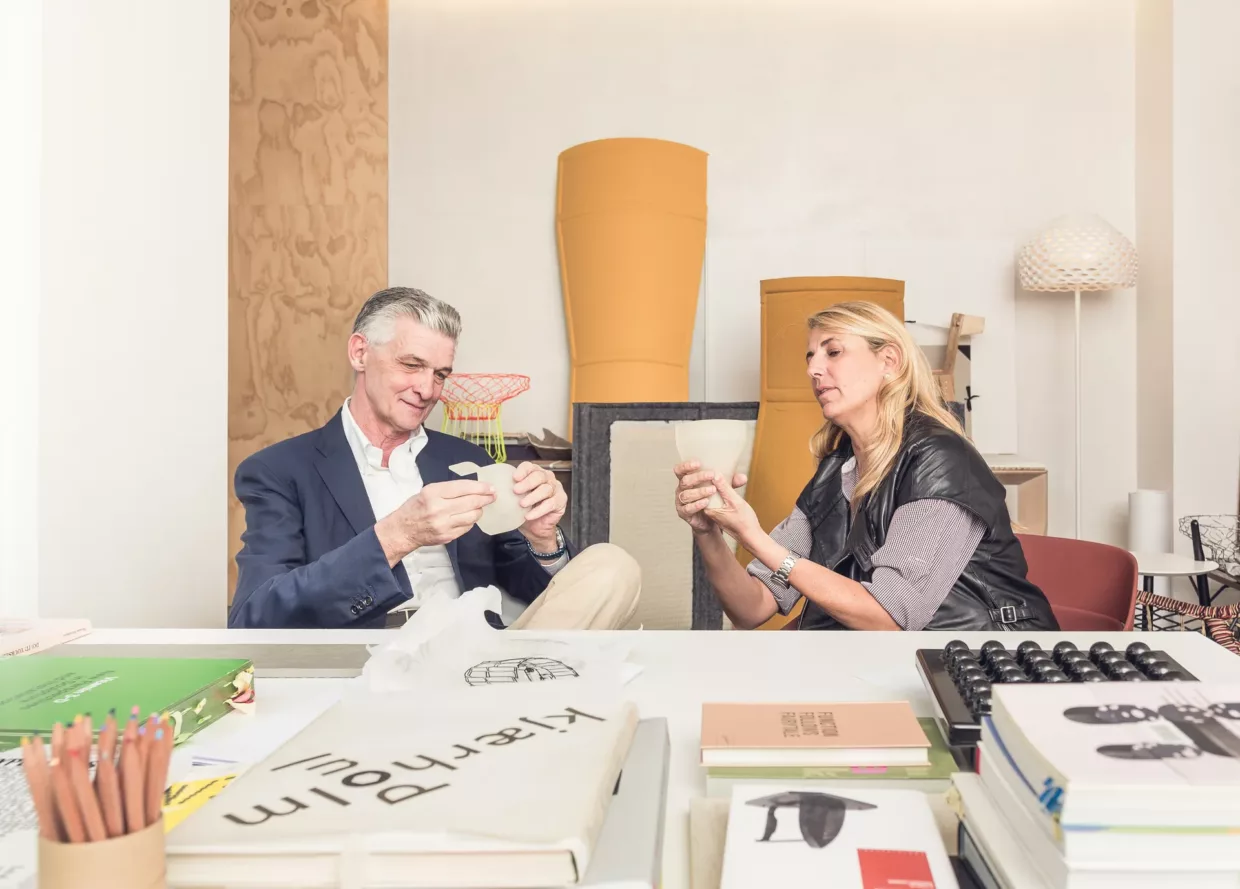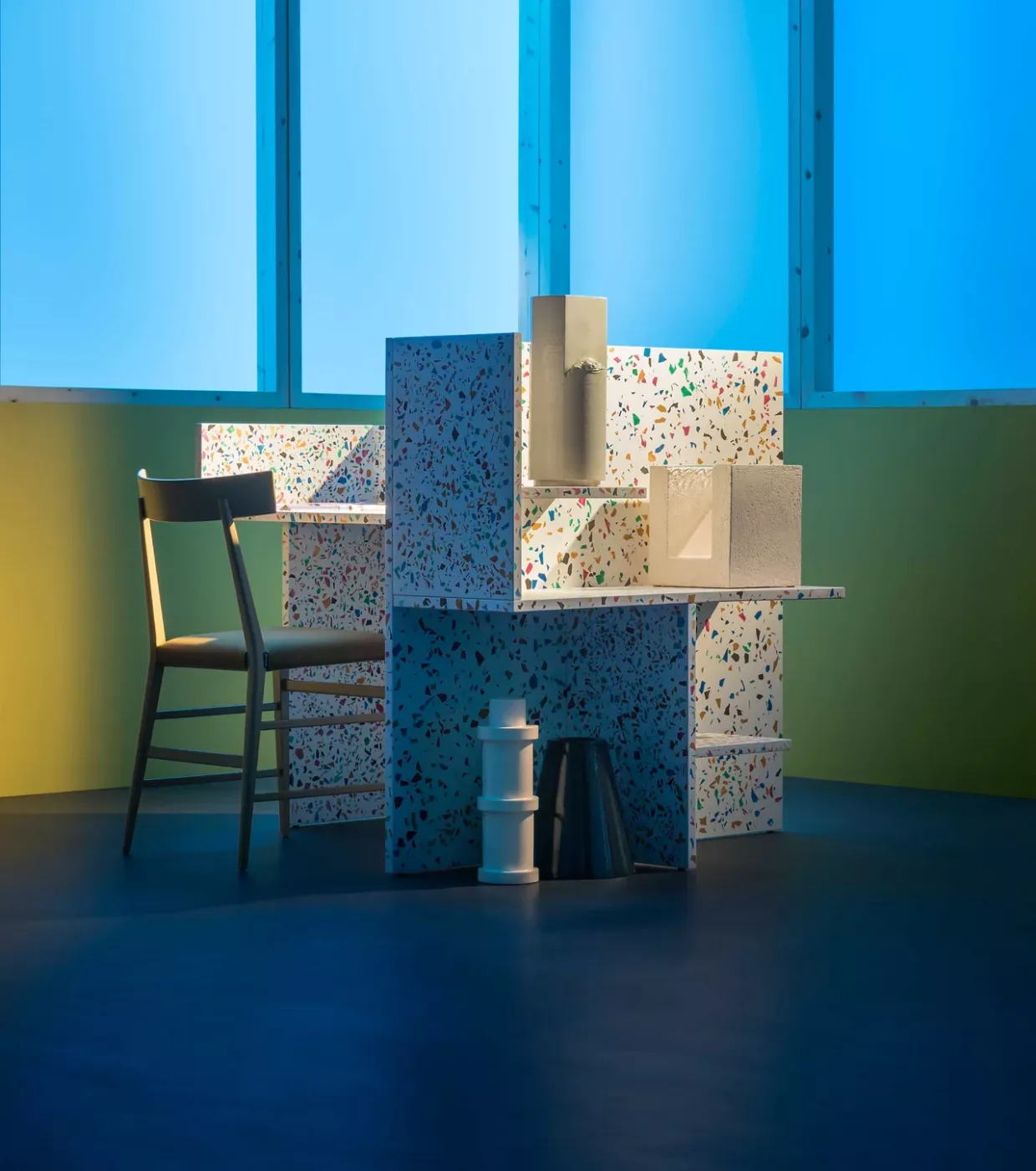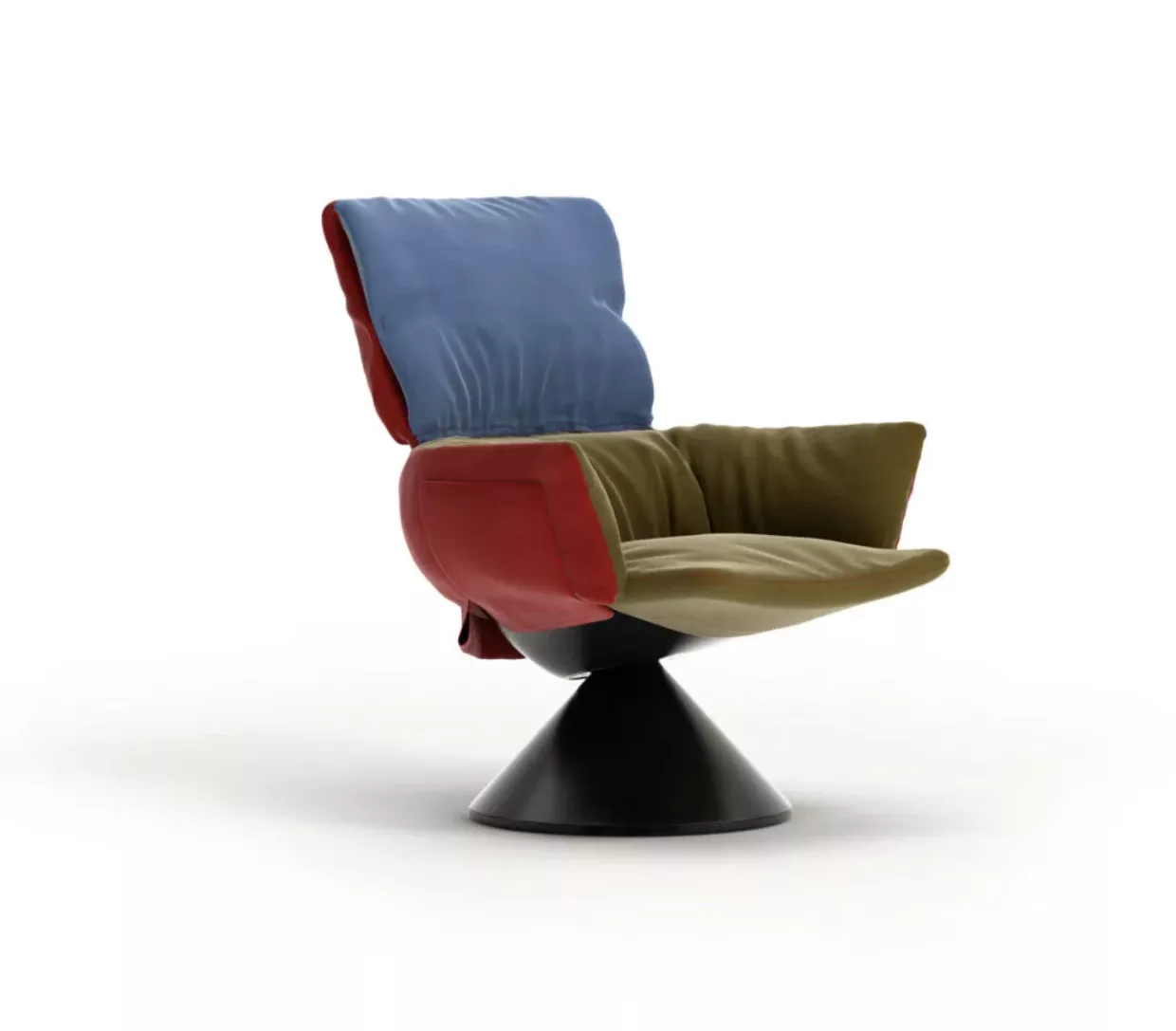When Patricia Urquiola met Giulio Cappellini
Sep. 27, 2023
Patricia Urquiola and Giulio Cappellini share a great respect for design’s great masters, having both been inspired by the leading names that shaped the landscape of Italian and international design across the 20th century. This common fascination is evident in their work together, from the Terrazzo surface of the ‘Radical Fake’ desk that nods to Shiro Kuramata speckled patterns, to the structure of the ‘Lud’o’ armchair, so closely linked to Vico Magistretti’s approach to design.
‘Patricia is a much loved and undisputedly successful designer,’ Giulio Cappellini told us. ‘We have always been bound by a deep esteem and friendship, and I am proud to say that the first project realised by Patricia is a series of stone seats for the garden of my father’s house. For Cappellini, she created the “Lud’o” armchair, a product of great commercial success, but the piece I am closest to is “Radical Fake”, a small desk with unusual shapes and materials.’
Here, as part of Giulio Cappellini’s guest editorship of Wallpaper* October 2023 (also including an interview with Barber Osgerby on Cappellini, and Cappellini’s vision for the interiors of tomorrow), Urquiola tells us about her collaboration with Cappellini, and how it has inspired her throughout her design practice.
Wallpaper*: How did you meet Giulio Cappellini?
Patricia Urquiola: I met him when I was the head of design at Piero Lissoni Studio. I was a big fan of Giulio not only as art director, but also for his amazing installations. The first I remember was at Palazzo Morando in 1986, when I was still a student of architecture in Milan, dedicated to the Progetti Compiuti collection by Shiro Kuramata. Other impressive events were the first anthological exhibition in Cologne in 1994, curated by Achille Castiglioni; a show at Juliet’s House in Verona in 2002; and all the Superstudio installations.
W*: What did you most enjoy about working with him?
PU: I think Giulio Cappellini revolutionised how we express design with a unique language and openness. He is one of the industry’s best talent scouts, nurturing creativity and pushing boundaries. His visionary leadership inspires the next generation of designers, leaving a lasting impact on the design world.
W*: How has your collaboration with Cappellini helped shape your career?
PU: My collaboration with Cappellini has been truly inspirational. Every project we do together begins with a series of engaging and insightful conversations. At the beginning, I did a special collection in connection to an exhibition, that was not put into production. That stays in Giulio’s house. One of our latest projects is ‘Lud’o’, a seating piece that holds great significance for both of us. As we discussed ideas and concepts, we found ourselves delving into the world of design heritage and drew inspiration from the work of Vico Magistretti. Presenting one of the initial prototypes to Giulio, it immediately became clear the connection with Vico’s design philosophy and approach. Our collaboration is a true journey of growth, pushing the boundaries of design.
W*: What is your vision for future landscapes in private and public interiors?
PU: We finally all understand the environmental issues must be solved. As designers, when we start working on a new product, we need to think of the afterlife of it as a crucial part. When I was younger, ‘the idea’ was the most important aspect of our work. I see now that the way we work has changed, that eco-friendly materials and practices are integral to creating responsible and environmentally conscious spaces.
Moreover, technology will play a central role in shaping interiors, offering immersive experiences and enhancing user interactions. Seamless transitions between real and virtual worlds will become a natural part of interior design, enabling innovative and dynamic spaces. However, the common qualities defining designers have not changed: we all still need to be curious, hard researchers, unfearful of coming out of our comfort zones and always trying to go beyond the limit.
Source: Wallpaper*



